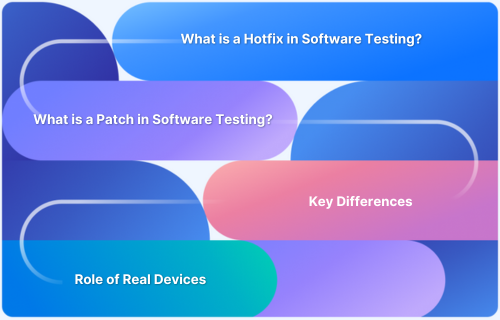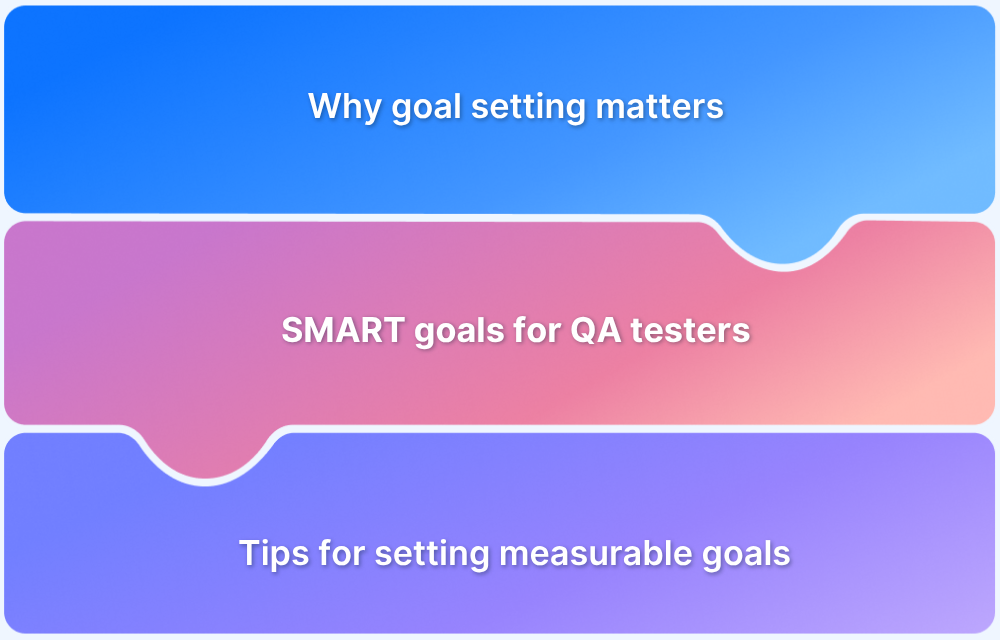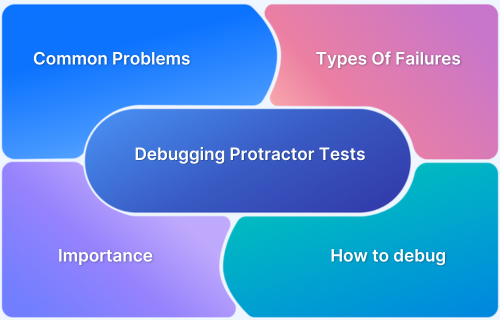Organizations rely heavily on software, making prompt resolution of issues essential. Developers and testers must ensure quality throughout, addressing problems from development to release and beyond with effective practices.
Overview
What is a Hotfix?
A Hotfix is a quick, temporary solution to address critical issues in a live production environment, deployed urgently to minimize disruptions. For example, a critical security flaw in a banking app is patched immediately to prevent unauthorized access.
What is a Bugfix?
Bugfix is a permanent resolution for software issues, applied after thorough testing as part of a planned development or release cycle. For example, a spelling error on a website is corrected in the next scheduled update.
Key Differences between Hotfix and Bugfix:
- Testing: Hotfixes undergo minimal testing; bugfixes involve extensive testing.
- Application: Hotfixes target production issues; bugfixes address both production and development problems.
- Deployment: Hotfixes are emergency patches; bugfixes are part of scheduled updates.
- Timing: Hotfixes are implemented urgently; bugfixes follow planned schedules.
- Process: Hotfixes skip conventional deployment; bugfixes follow standard protocols.
- Risk: Hotfixes pose higher risks; bugfixes ensure greater stability.
This guide explains two of these practices, Hotfix and Bugfix, their differences and how both are essential in different contexts.
What is a Hotfix?
A hotfix is an immediate software update that resolves any critical issue in an application. It bypasses the usual software development process and integrates the change without causing any system downtime.
The word “hot” conveys that the fix is applied to a live system without causing any downtime. Hotfixes are employed in situations that require immediate attention, as if the system is in a critical state and must be addressed urgently. While they may serve as a short-term remedy, hotfixes are often essential, particularly in scenarios where system outages could have severe consequences.
Hotfixes are not often meant to be released publicly for several reasons such as:-
- Hotfixes target specific issues and might not be needed by every user; therefore, they could create confusion for users who are not facing the issue for which hotfixes are meant.
- There’s always an urgency when deploying hotfixes; therefore, there is a high chance they have not undergone rigorous software testing.
- If the hotfix concerns a potential security breach, it could alert the threat actors before it is installed on every vulnerable system.
Read More: Hotfix vs Patch: Core Differences
Who uses Hotfixes and why?
Hotfixes are reserved for urgent scenarios such as security vulnerabilities, changes in database schemas, software crashes, and more. The developer team releases hotfixes for such critical issues and takes them with the highest priority. The primary reason for implementing Hotfixes is to resolve an issue immediately that cannot wait for any future scheduled update.
Consider a scenario involving a banking application that begins displaying incorrect bank balances to users. In this case, delaying the fix could lead to widespread panic among customers, financial losses, and damage to the bank’s reputation. A quick resolution is essential to maintain trust and prevent further complications.
Therefore, the development team would release a hotfix to correct the issue as soon as possible. The hotfix would involve identifying the root cause of the error, implementing a solution, and deploying it rapidly to restore accurate balance displays for users.
Therefore it is recommended to prioritize such critical issues and resolve them with an immediate effect.
How does a Hotfix work?
A hotfix is a quick solution applied to fix urgent software issues like critical bugs or security vulnerabilities. When a problem is detected, developers quickly analyze it, create a fix, and test it to make sure it doesn’t cause new problems.
The hotfix is then reviewed and tested in a staging environment before being deployed to production. This process usually happens outside regular release schedules to minimize downtime. After deployment, the system is monitored to ensure the fix works, and user feedback is gathered. Throughout the process, the focus is on speed and efficiency while keeping stakeholders informed.
Read More: How to Debug your HTML and solve errors?
What is a Bugfix?
A “bug” in a software application refers to an error in the codebase that causes it to behave unexpectedly and in a non-desired way. Therefore, updating the application’s code to fix any bugs present is known as Bugfix.
Before diving into how Bugfix works, let’s understand what factors cause bugs in an application in the first place. Here are a few reasons that lead to the rise of bugs in an application:-
- Incorrect logic, syntax error, or deprecated script in code.
- In a complicated codebase, there are interrelated components that might interact improperly and cause issues.
- Insufficient software testing might also overlook any bug present in the system.
Read More: Difference between Bugs and Errors
Who uses a Bugfix and why?
Bugfixes are planned as part of the regular update cycle for developers and QAs and therefore undergo a proper amount of testing before it is released to the users, which makes them more reliable.
For example, users report that the banking application is displaying dates inconsistently in different formats; in some places, dates appear in MM/DD/YYYY format whereas in DD/MM/YYYY format in others, indicating issues in the code. Since the issue poses no risk or vulnerability to the system, it will be handled in the next scheduled update.
How does a Bugfix work?
All the errors and issues that the team receives through various channels and bug-tracking systems are analyzed and sorted according to their urgency level. The highly critical issues are dealt with right away which is known as a hotfix, as learned above, however, several issues that don’t require such urgent care are planned under the next scheduled update.
A bugfix involves identifying a software bug and analyzing its cause. Developers then fix the code and test it to ensure the bug is resolved without affecting other parts of the software. The fix is reviewed for quality, then deployed to a test environment for further checks. Once approved, it goes live in production. Monitoring and user feedback help confirm the fix is successful. Good documentation and communication are essential throughout the process to maintain software quality and keep users informed.
Hotfix vs Bugfix
Here is a side-by-side comparison of hotfix vs bugfix to understand their core differences.
| Criteria | Hotfix | Bugfix |
|---|---|---|
| Definition | Temporary solution for a critical problem. | Permanent solution for minor issues, anticipated issues, and previously applied Hotfixes. |
| Testing Tenure | Very minimal time allocated to testing | Sufficient amount of time allocated for testing |
| Application | It is used to solve critical issues of the production environment. | It is used to solve issues in both the production and development environments. |
| Deployment | It is deployed as an emergency patch apart from the regular release cycle. | It is deployed as a part of the scheduled release cycle. |
| Timing and Urgency | Implement with an urgency at the earliest. | Implemented according to the update schedules, and undertakes less urgent issues. |
| Deployment Process | Requires a fast deployment process often avoiding the conventional process. | Uses the conventional deployment process which comprises approvals, testing, and release. |
| Impact on the Development Cycle | The typical development cycle may be disrupted due to its urgent nature. | It does not disrupt but rather integrates into the regular development cycle. |
| Risk and Stability Considerations | Increased risk due to quick and hasty testing which leads to instability. | Reduced risk due to extensive testing which leads to higher stability. |
Why is it Important to Test on a Real Device Cloud Before Fixing the Bugs?
It has become a worldwide norm to thoroughly test your product before launching it to users in real-user conditions, as this effectively captures defects. It also ensures a good user experience, protects your reputation, and addresses other important factors. That said, real device cloud testing is one of the ideal ways to conduct a thorough test of your product.
Testing on a real device cloud gives you access to unlimited devices in one place without having to buy numerous physical devices. This not only provides broader coverage for testing but also significantly reduces costs.
BrowserStack is a one-stop solution providing real cloud devices and cross-browser testing capabilities. Testing your application on BrowserStack gives you an edge by performing parallel testing on a wide range of devices and operating systems in the cloud from older versions to the latest ones.
Therefore, a thorough test on a real device cloud ensures your application reaches a wider spectrum of devices and hence more users.
Hotfix vs BugFix: What to choose?
Bugs are an inevitable part of software applications due to the industry’s continuous evolution, unexpected user behavior, and other challenges.
When to Use Hotfixes and Bugfixes
- Critical Issues: Use hotfixes to resolve urgent problems, such as security threats or vulnerabilities that demand immediate action. They provide a temporary fix to keep the system functional.
- Non-Critical Issues: Use bugfixes as part of routine updates to address minor bugs, anticipated issues, or previous hotfixes. Bugfixes ensure thorough testing and long-term stability.
- Impact on Development: Hotfixes focus on immediate problem-solving, often bypassing standard processes, while bugfixes integrate seamlessly into the regular development cycle without disruptions.
Things to Consider
- Excessive use oh hotfix can harm productivity, compromise product quality, and increase costs.
- Bugfixes allow for better testing, offering reliability and permanent solutions while maintaining the development flow.
Useful Resource for Bug
Tutorial
- Bug Tracking: A Detailed Guide
- How to find Bugs in Software?
- How to find bugs in Android apps
- Understanding Bug Life Cycle in Software Testing
- How to find Bugs on your Website
- How to write an Effective Bug Report
- How to find Bugs on your Mobile App
- How to use Slack Bug Reporting while Testing
- Bug Bash: A Guide to Planning and Organizing
- How to report bugs in Appium UI Testing?
- How to use GitHub Bug Reporting while Testing
- How to Report Bugs during Visual Regression Testing
Tools and Tips
- 7 Common Types of Software Bugs every Tester should know in 2024
- 18 Best Bug Tracking Tools in Software Testing in 2024
- Why integrate with a Bug Tracking System?
- Different Types of Testing to Deliver a Bug-Free User Experience
- 5 Common Bugs Faced in UI Testing
Key Differences
Conclusion
Hotfixes address pressing risks quickly but are temporary solutions, while bugfixes provide long-term stability through planned updates. Understanding their roles helps maintain software reliability and ensures efficient decision-making.







